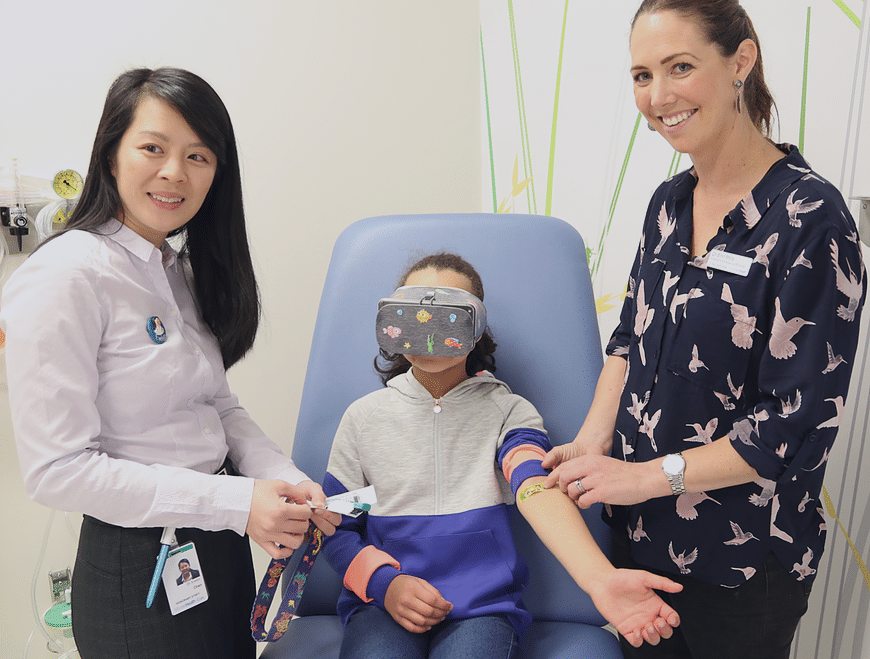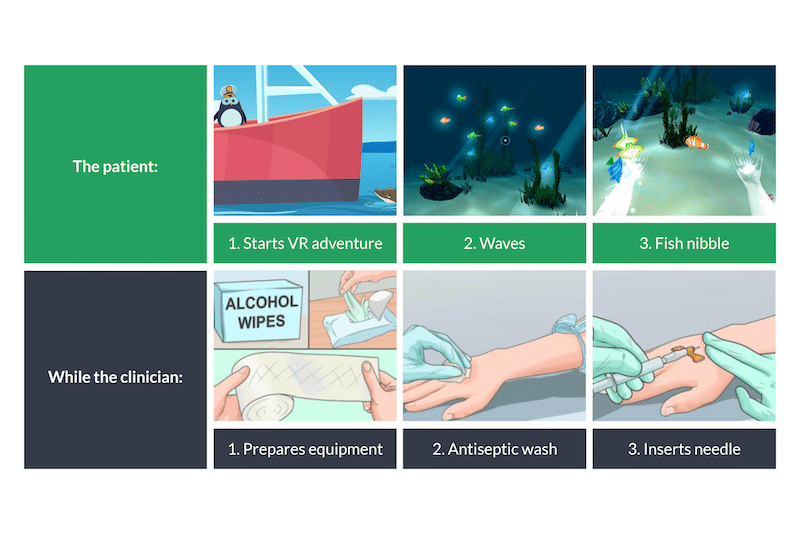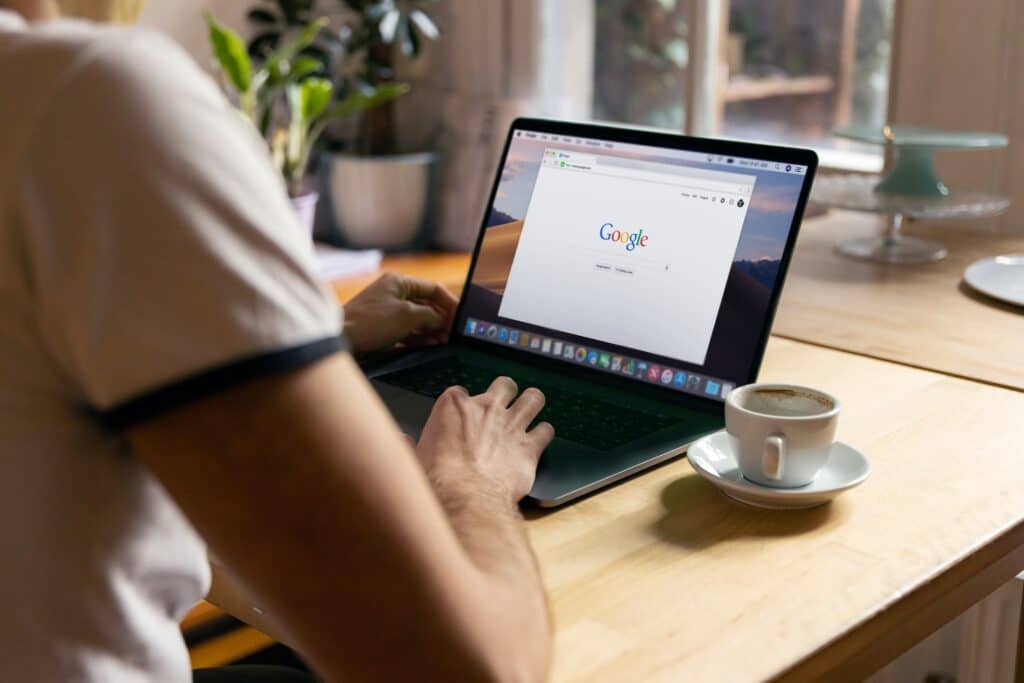An Interview with Smileyscope
Australian clinicians are expecting unprecedented demand for this year’s flu shot as people take extra steps to protect themselves against a double diagnosis of flu and COVID-19. But what about those patients too scared of injections to sign up for the shot?
Smileyscope—a new virtual reality tool developed by Australian doctor Dr. Evelyn Chan—may be the answer. The VR goggles are helping clinicians not only with giving patients injections, but wound dressing, nasogastric tube changes, preparing anaesthesia, and more.

Pictured: Smileyscope co-founder, Dr. Evelyn Chan (left), and Dr. Erin Mills (right)
Reducing pain with virtual reality
As a paediatric clinician, Dr. Evelyn Chan is only too familiar with her patients’ fear of injections. “Usually, the first question a child asks as they walk through my door is: ‘Do I have to have a needle today?’,” Dr. Chan says. “This can really derail the consultation—an experience many clinicians deal with on a daily basis.”
“My co-founder, Paul, specialises in respiratory issues,” Dr. Chan adds. “Even though his practice worked with adult patients, some of them were still so scared of needles that he was having to sedate them to perform basic procedures.”
“We both felt that if we could improve the experience of having an injection early on, we could reduce the long-term fear.”
“We knew there was evidence that virtual reality (VR) was much more immersive for children than watching a TV or playing with toys,” Dr. Chan adds.
“By combining VR with other best-practice techniques, like relaxation and deep breathing, we thought we could help reduce the amount of pain children were registering when having an injection.”
Creating Smileyscope—from idea to clinical trial
The Smileyscope team began work on their VR project purely for use in their own clinic.
“The journey from product to business was pretty organic,” Dr. Chan explains. “We started working with about 100 patients, families and clinicians, interviewing them to find out where they’d like to go if they could virtually escape the procedure room. 90% of kids said they’d like to go underwater, so that was the environment we chose for our VR experience.”

Pictured: A frame from the Smileyscope VR experience in April 2020
“We worked closely with kids to develop the storyline, then worked with parents and clinicians to find out how they’d like to talk about the product and how it would fit in with their existing workflows,” Dr. Chan adds.
“From there it was a matter of engaging software engineers and designers to develop the VR itself, and then on to conducting a clinical trial.”
A reduction in pain and distress for patients
The Smileyscope team conducted a randomised controlled trial of 252 children (aged 4-11 years) who were having blood tests and intravenous cannulation while using Smileyscope. This was the largest and most rigorous trial ever done on the use of VR in a medical procedure.
When children reported their experience of pain during these procedures, the trial found that using VR reduced self-reported pain by up to 60%, reduced distress by up to 75%, and halved the need for restraints. The trial also found that VR was effective in emergency departments and outpatient phlebotomy units.
“It was during the trial that people started asking how they could buy Smileyscope,” Dr. Chan says. “That was when we thought we had to find a way to get it into more people’s hands.”
Today, Smileyscope has evolved from an idea to a product with an international reputation. This project is supported by the Australian Government Department of Industry, Science, Energy and Resources through the Entrepreneurs’ Programme.
The team have collected accolades including a Webby Award, a Gold Award at the UCSF-Stanford Paediatric Device Consortium Accelerator Shark Tank, and won the 2019 Impact Paediatric Health competition at SXSW.
Inside a procedure using Smileyscope
So what happens within the underwater environment children experience through the Smileyscope headset? The VR storyline has been created to mirror what is actually happening between clinician and patient, with a new underwater experience at each step of the clinical procedure.
“Waves wash over the child’s arms when they’re being cleaned with antiseptic, then fish come in and nibble when the nurse is putting in the needle,” Dr. Chan explains. “This means children can understand what’s happening, but they experience a much less scary sensation.”

Pictured: How the Smileyscope VR experience matches up to the clinician’s perspective
Beyond injections—other clinical uses for VR
Vanessa Carslake, Smileyscope’s Business Development Specialist, shares that Australian clinicians are finding new ways to use this technology, improving patients’ experiences across a whole range of procedures.
“The Monash Children’s Hospital are using it to prepare children for their MRIs, relaxing them before they go into the machine, as well as using it before they need to be intravenously cannulated,” Ms Carslake says.
“Clinicians are also using it for dressing changes, nasogastric tube changes, and even for kids who are in hospital long-term and just need a break from the ward—they can go swimming with the dolphins to escape from reality for a while.”
Amanda, a nurse who has been using Smileyscope since the early days, says, “The headset provides distraction for our kids during invasive procedures. They are able to focus on something fun and engaging allowing the medical team to provide essential care in much calmer environment. Not only does the headset help the child, but it reduces the stress and anxiety for caregivers watching and supporting them too.”
Dr. Chan adds that her team are now starting to hear about clinicians who are using Smileyscope with older patients, expanding its use beyond paediatric procedures. “Some clinicians are using it in really creative ways we hadn’t thought of,” she explains.
“One doctor used it to decrease blood pressure readings for teenagers. Other clinicians are using it for things like taking temperatures, taking swabs, removing foreign bodies, and getting patients ready for anaesthesia. So there’s a whole range of creative uses available to clinicians and patients, depending on their needs.”
Saving clinicians time and reducing stress
According to Ms Carslake, a tool like Smileyscope has the potential to enhance the way a clinic operates overall, decreasing stress on staff as well as on the patients themselves.
“Clinicians are up against an unprecedented scenario at the moment and it looks like flu clinics are going to be very busy this year,” she explains.
“If practice nurses have a tool that can keep their patients calmer and less anxious, their time will be spent less on relaxing the patient and more on completing the procedure itself. Instead of having a screaming child at the end of an appointment, they’ll have a patient walking away going ‘Wow, that was awesome!’”
A specialised storyline for older patients is also in the works. “From May onwards we’ll have new VR content that’s suitable for both teenagers and adults—those people who have a needle phobia and are resisting going in for the flu vaccination due to that fear,” Ms Carslake says.
Using Smileyscope at your clinic—get an online introduction
If Smileyscope sounds like a tool that could be useful at your clinic this flu season, the Melbourne-based team are able to set up online introductions and provide clinics with trial devices.
“We’re able to work around the current visitor restrictions for clinics and set up a Zoom meeting to outline how Smileyscope could fit with what the clinic needs,” Ms Carslake says.
“We can also send clinics their own device to trial, along with surveys for patients so clinicians can track how their patients are responding.”
To learn more about Smileyscope, visit smileyscope.com.
If you have a question or would like to purchase a headset, please email Vanessa Carslake at [email protected].


